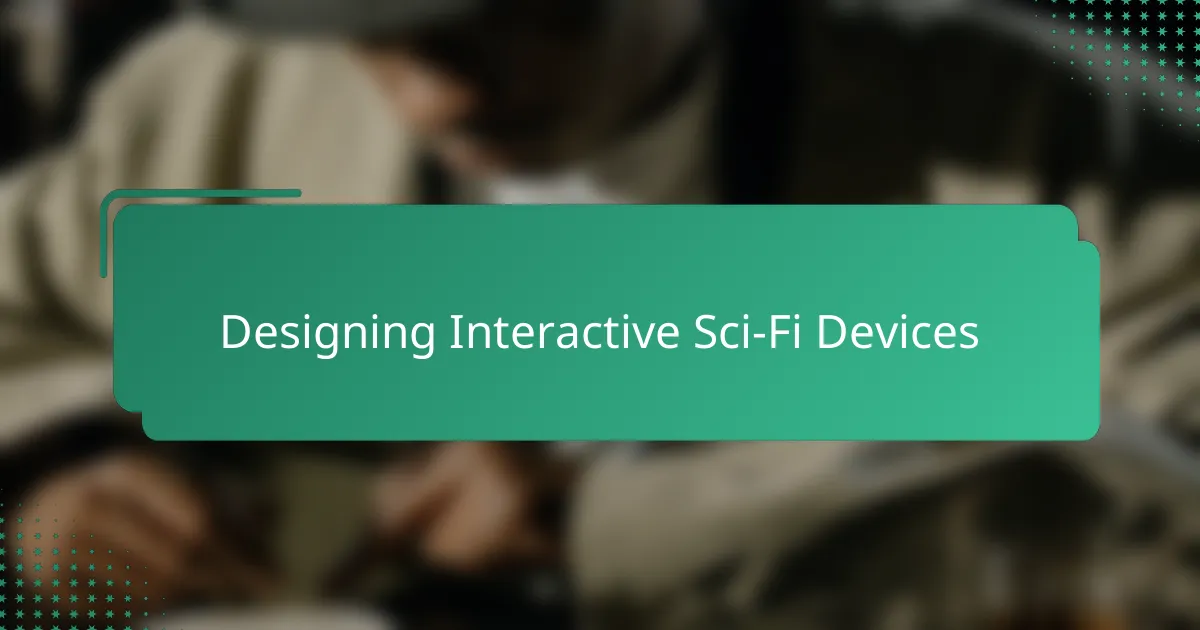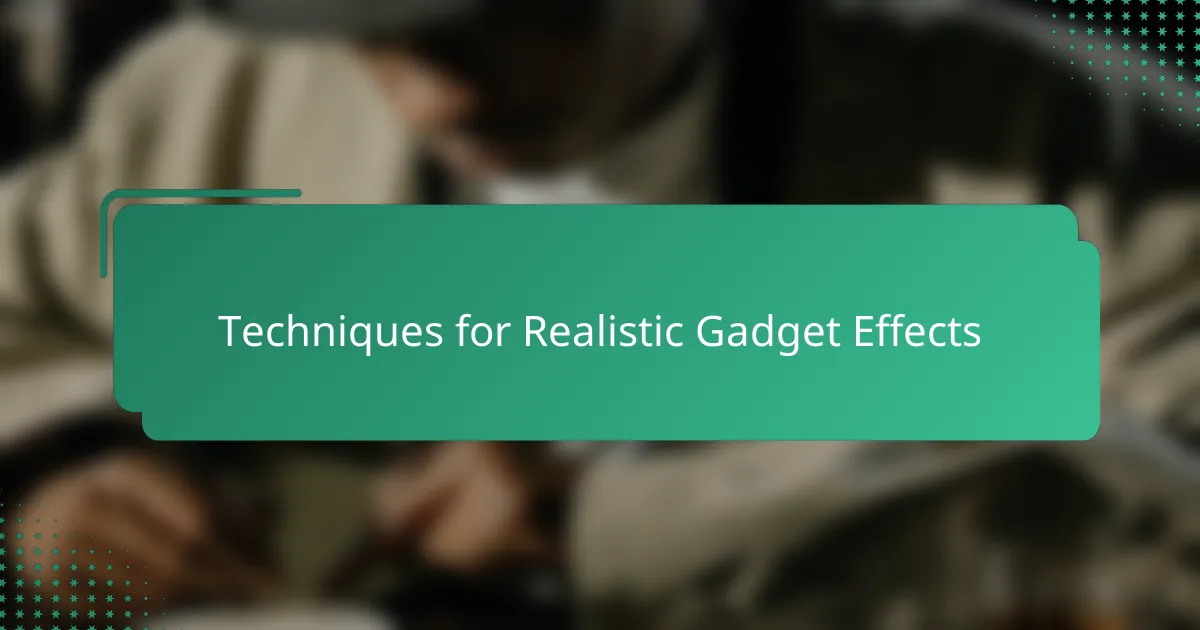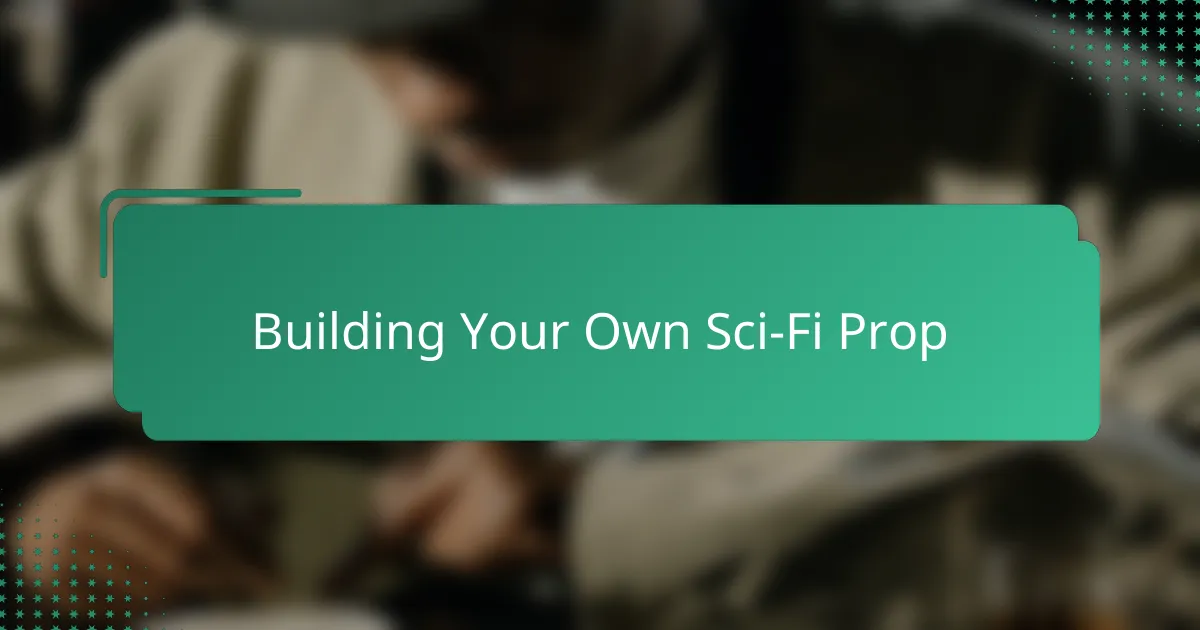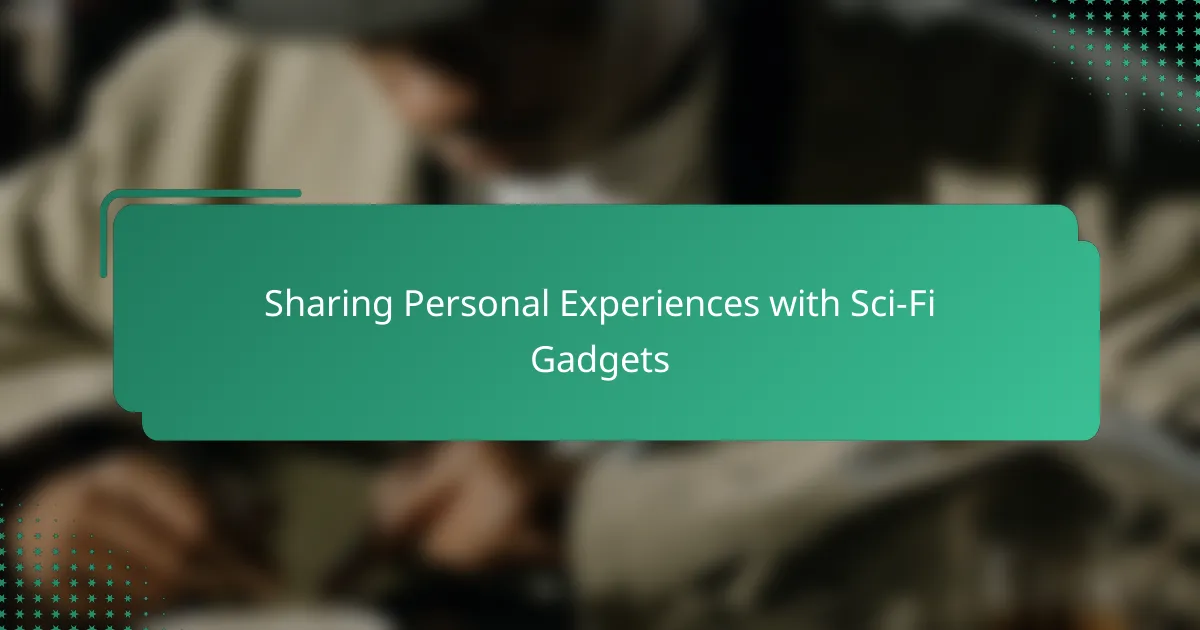Key takeaways
- Science fiction props blend creativity and functionality, enhancing narrative immersion by evoking emotions and prompting curiosity about future possibilities.
- Materials play a crucial role in prop design, with durability and interactive features like lighting and sounds transforming gadgets into engaging experiences.
- Building your own sci-fi prop emphasizes creativity over expensive tools, urging experimentation and personal touches to create unique artifacts.
- Regular maintenance and troubleshooting are essential to keep interactive elements functioning, enhancing the overall user experience with the prop.

Understanding Science Fiction Props
Science fiction props have always fascinated me because they serve as bridges between imagination and reality. They are not just objects; they tell stories, evoke emotions, and invite us to ponder what the future might hold. When I first encountered a well-crafted prop, I realized how powerful these creations can be in shaping a narrative.
What makes a science fiction prop truly compelling? To me, it’s the blend of creativity and functionality. A gadget that looks futuristic but also feels believable pulls you deeper into the world it belongs to. Have you ever held a prop and felt that spark of excitement, as if you were holding a piece of the story’s universe in your hands? That’s the magic at work.
Understanding the intricate details behind these props—materials, design choices, and even subtle wear and tear—has changed how I appreciate them. It’s like reading a diary written in objects, each scratch and button telling its own tale. This attention to detail is what separates mere replicas from iconic artifacts of science fiction.

Essential Materials for Sci-Fi Gadgets
Choosing the right materials for sci-fi gadgets is more than just a technical decision; it’s about crafting an experience. I remember working on a prop that used a combination of lightweight plastics and metallic finishes—materials that not only looked futuristic but felt real in my hands. Ever noticed how certain materials instantly make you believe you’re holding something from another world?
Durability is key. Sci-fi gadgets often need to withstand constant handling, whether on set or in a fan’s collection. From my experience, using sturdy polymers and carefully treated metals helps maintain that fresh-from-the-future look without compromising longevity. Isn’t it fascinating how the choice of material can subtly influence a prop’s storytelling power?
Transparency and glow effects add another layer of immersion. I’ve found that acrylic and LED components can transform a basic gadget into a mesmerizing piece that seems alive. When a prop lights up or has translucent parts, it feels like it’s pulsing with energy—almost inviting you to engage with it. How can something so simple create such a strong connection?

Designing Interactive Sci-Fi Devices
Designing interactive sci-fi devices is where creativity truly meets technology. I’ve often found that the challenge lies in making buttons, switches, or screens not just decorative, but responsive in a way that feels intuitive and satisfying to use. Have you ever handled a prop that seemed almost alive because of those little interactive elements? That feeling is exactly what I aim to capture.
From my experience, the key is balancing complexity with accessibility. If a gadget is too complicated, it breaks the illusion and frustrates the user. Conversely, too simple and it loses that futuristic charm. I try to imagine how someone within the story’s universe would naturally interact with the device, which often guides my design choices.
Incorporating feedback elements like sounds, lights, or haptic responses can elevate a prop from static to immersive. I recall working on a control panel where subtle vibrations and blinking indicators made the device feel like it was processing commands in real-time. That level of sophistication transforms the user’s experience and deepens their connection with the sci-fi world. What’s more engaging than holding a gadget that reacts to your touch like it’s aware of you?

Techniques for Realistic Gadget Effects
When it comes to crafting realistic gadget effects, I’ve learned that layering subtle lighting is a game-changer. Using dimmable LEDs or flickering light sequences can mimic energy fluctuations or system glitches, making the gadget feel alive rather than just static. Have you ever noticed how even a slight pulse of light can transform a simple prop into something that seems almost sentient?
Sound design also plays a crucial role in believability. I once programmed a series of gentle beeps and static noises for a communication device prop, and the difference was remarkable — suddenly, it wasn’t just a prop, but a tool with personality. Incorporating these auditory cues invites the user to engage more deeply, heightening the immersion.
Finally, the physical interaction itself must feel satisfying. From my perspective, adding tactile feedback like soft clicks or resistance in buttons creates a convincing illusion of functionality. I often ask myself, “Does this button press feel right?” because that tiny detail can make or break the entire experience. It’s these nuanced touches that turn props into memorable experiences.

Building Your Own Sci-Fi Prop
Building your own sci-fi prop is an adventure in itself, filled with trial, error, and moments of pure excitement. I remember the first time I glued together pieces that, to me, looked like a gadget from another world—the thrill of seeing my imagination take form was indescribable. Have you ever felt that rush when something you made starts to look and feel like it belongs in a sci-fi universe?
One thing I’ve learned is that you don’t need fancy tools or expensive materials to create something captivating. Sometimes, repurposing everyday objects—like old circuit boards or metallic scraps—can add unexpected authenticity and charm. It’s fascinating how a discarded piece of tech can suddenly gain new life and story with just a little creativity.
Don’t be afraid to experiment and embrace imperfections. In my experience, those small flaws—a slightly uneven paint job, tiny scratches—often make the prop feel more real, like it’s truly been used in a futuristic setting. What if every scratch you add tells a history only you know? That personal touch can turn your prop from a simple craft into a cherished artifact.

Troubleshooting Common Prop Issues
One of the most frustrating issues I’ve faced with sci-fi props is when buttons or switches suddenly stop responding. It makes me wonder—how can something so carefully crafted become unresponsive just when you need it to feel alive? I’ve found that often, a quick check of wiring connections or simply reseating loose parts can save the day.
Sometimes, the lighting effects don’t behave as expected, flickering erratically or going dark at inconvenient moments. From my experience, this usually traces back to power supply problems or faulty LEDs. Have you ever had that sinking feeling when a glowing gadget goes completely dim? A thorough inspection and replacement of tiny components can revive that pulsing energy.
Finally, mechanical parts can jam or feel stiff after repeated use, which shatters the illusion in an instant. I’ve learned that regular lubrication and gentle cleaning prevent most wear-related hiccups. Isn’t it intriguing how even the smallest maintenance tasks can keep a futuristic device feeling fresh and believable?

Sharing Personal Experiences with Sci-Fi Gadgets
When I first integrated interactive elements into a sci-fi gadget, I was amazed by how those simple features transformed the user experience. It wasn’t just about making a cool-looking device anymore; it became something that reacted, invited exploration, and sparked curiosity. Have you ever noticed how a touch-responsive switch or a blinking light can suddenly make a prop feel alive?
There was a moment during one project when I watched someone else interact with a gadget I had built. Seeing their eyes light up as the device responded to their input reminded me why I love creating these props so much. It’s deeply satisfying to know that what started as an idea can evoke genuine wonder and engagement in others.
Of course, not every interactive feature works perfectly the first time. I remember troubleshooting a prop whose buttons were inconsistent, which taught me patience and attention to detail. But when those glitches finally resolved, the joy of holding a seamless, responsive device made every challenge worthwhile. Isn’t that the essence of bringing science fiction to life?


